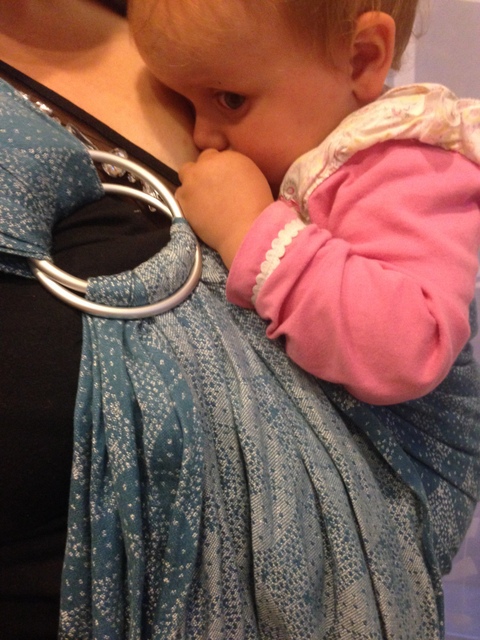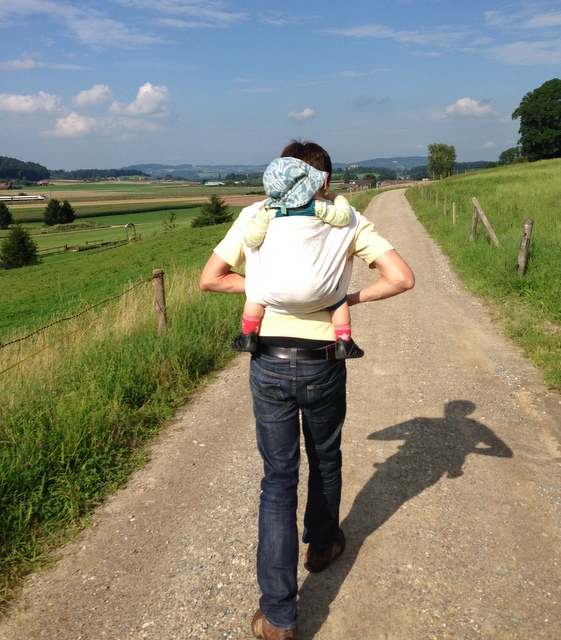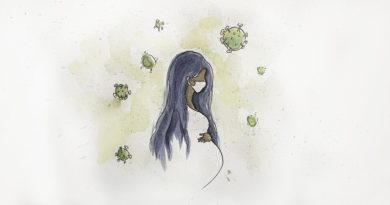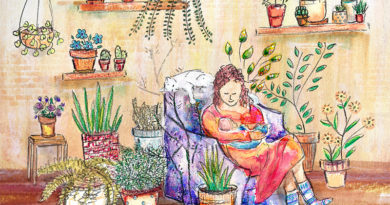Baby-wearing – Revival of an Old Tradition

Strollers are without doubt among the most iconic tools of baby care in our society. In the 200 years since they have emerged in Victorian England, they have almost completely crowded out the traditional ways of transporting babies and toddlers.
The starting point of the human baby-wearing culture is assumed to be approximately five million years in the past. This was long before our ancestors started to become residential, roughly 6000 years ago. The nomadic lifestyle required them to have their babies with them all the time, and as there were no other options, families carried their children on their bodies. Moreover, being carried was vital for the babies to be protected from wildlife, heat, cold and starvation. As a consequence, human babies developed life-saving reflexes and instincts that help them to attach to their caregivers.

Have you ever wondered why your sleeping baby suddenly awakes when you try to put it into its crib? This is exactly one of the life-saving instincts that have survived until today. The babies of our ancestors became sensitive to body movements and started to cry as soon as they were put down in order to ensure attention of their caregivers. Nowadays it is assumed that our babies do not know that their mothers are around when they cannot see them. This changes when they reach about six-eight months and understand the concept of object permanence, i.e., knowing that an object still exists even when not visible. Other relicts are the foot and the hand grasping reflex, as well as the Moro reflex (a response to a sudden loss of support, lifting arms and hands at the same time as if trying to attach onto something). These reflexes are all meant to support our babies to cling to their caregivers.
So far, baby-wearing seems to be all about evolution, right? Indeed, our babies whatever their cultural background, expect to be carried from birth onwards. This is due to our evolutionary history. Ultimately, it is only the way various cultures carry their babies that differs. A few examples help to illustrate this: In Mexico people use a Rebozo, a square of woven cloth tied over the parent’s shoulder; in Alaska people use an Amauti, a very thick arctic jacket with a baby pocket; in Wales people used to wear their babies in shawls, called Siol Fagu; Native Americans used cradle boards and in Asia a variety of carriers has been in use. But what is our tradition, and what has happened to it? Why do we have such divergent opinions on how to wear our babies?

Prior to the 19th century, traditional baby-wearing was still very common in the western world. It was only in Victorian England that strollers made their appearance in the nobility, as they were used by the nannies. Soon they became a status symbol spreading in the high society. Thus, baby-wearing became a habit of the rural proletariat and the poor alone. In the 20th century a generation of male paediatricians published baby and child care guides proposing that babies must not be spoiled and should become independent from birth onwards. These scientific approaches strengthened the role of doctors and baby trainers and at the same time hindered the passing on of childcare knowledge from mother to mother. As baby-wearing is pretty much the opposite, it subsequently almost entirely disappeared from western culture.
So where do we stand today? In the meantime the idea that babies can be spoilt has been discounted by scientists and further research has proven the beneficial effects of body contact for babies’ development. Moreover, a lack of body contact and early autonomy may even delay babies’ development. Hence, baby-wearing has found its way back into our culture and is slowly moving away from something only “hippies” and “indigenous people” use. Fortunately, in recent years, producers of baby carriers and wraps have started to use stylish designs and patterns, attracting more people and making it suitable for every lifestyle and taste.
By Jasmin Heierli
Jasmin is a master’s student at the University of Zurich and works as a certified baby-wearing consultant of Trageschule Schweiz. She is member of the not-for-profit Verein Tragwerk ( www.verein-tragwerk.ch ). She lives in Elgg with her husband and 20-month-old daughter. To find a baby-wearing consultant in your area, visit the Tragwerk website or contact Jasmin at info@tragenimtuch.ch
Further reading: Ein Baby will getragen sein by Evelin Kirkilionis.
Photos from www.verein-tragwerk.ch used with permission.



